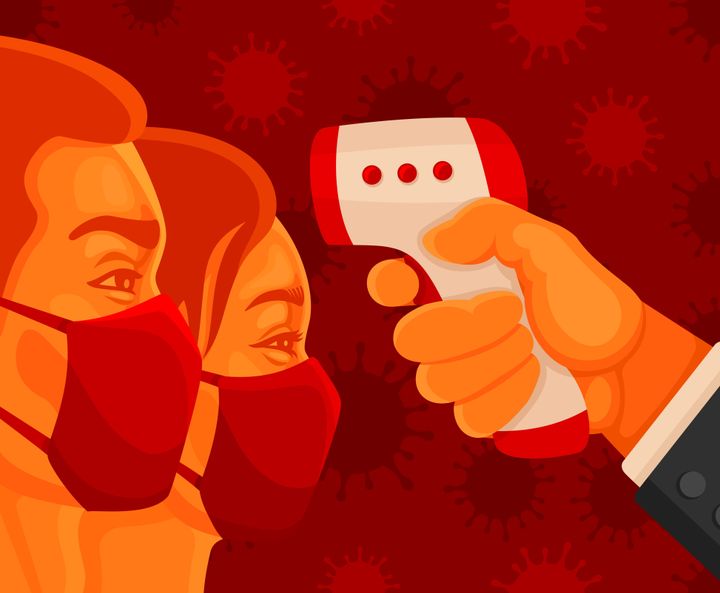
We’re here to guide you through the coronavirus pandemic. Sign up to the Life newsletter for daily tips, advice, how-tos and escapism.
As shops, hair salons and tourist attractions prepare to reopen, many people are wondering how they plan to keep customers safe.
John Lewis, for example, is installing hand sanitising facilities around stores, in addition to signage telling people to keep two metres apart. It will have frequently cleaned touch points, too, including basket handles, lift buttons, door handles and chip and pin payment devices.
Some stores are planning to implement temperature checks at entrances using so-called “thermometer guns” to see if customers have a fever – one of the symptoms of coronavirus. The devices measure the heat coming from the surface of a person’s body.
So, is this a useful way of detecting Covid-19?
Temperature checks can work to some degree, but they shouldn’t be used as a safety measure alone, experts tell HuffPost UK. If used, they should be carried out in conjunction with strict hygiene measures and enforced social distancing.
One of the reasons for this is that many people with the virus will be asymptomatic, meaning they don’t have any symptoms. They’re still infectious, but this would go undetected if they had their temperature checked.
It’s unclear how many people tend to be asymptomatic, however a study in Iceland found 50% of people randomly tested for the virus didn’t have any symptoms. Some cruise ship studies found that figure to be even higher, with up to three quarters of people showing no symptoms.
Professor Ashley Woodcock, an expert in respiratory medicine at the University of Manchester, tells HuffPost UK temperature checks would miss all asymptomatic cases – so there would be many false negative results.
And by September, when common cold and flu season starts, people are likely to show a fever, but they won’t have coronavirus, Prof Woodcock adds. “There will be false positive results – more than the true positives, which should be low by then.”
Another anomaly is that people can record a high temperature even if they aren’t ill – they might’ve been exercising, or it could be because of medication they’ve taken.
While Prof Woodcock doesn’t recommend temperature checking being the only measure used to keep customers safe, he does say they could provide a useful deterrent to stop people taking a risk.
Dr James Gill, a GP based in Warwick, says the accuracy of non-touch thermometers – the ones typically used at shops and airports – is “not great”. It’s been suggested they’re unreliable when used outside of healthcare settings.
This is because the people carrying out the checks might not be properly trained in doing so. They might, for instance, not hold the temperature gun close enough to the customer’s forehead – or they could hold it too far away. Accuracy may also depend on the type of thermometer being used.
“Ultimately, checking temperatures will be a very small part of trying to prevent a second wave,” says Dr Gill. “Even a small positive step is useful, but we have much greater evidence that continued social distancing and public use of face masks will be a much stronger defence against the second wave of Covid-19 as lockdown reduces.”
Prof Woodcock agrees. People should still keep two metres apart and follow hygiene precautions like hand sanitising on entering and exiting shops, he believes. “For the moment, you just have to assume everyone as being positive, and take the correct self hygiene precautions,” he adds.